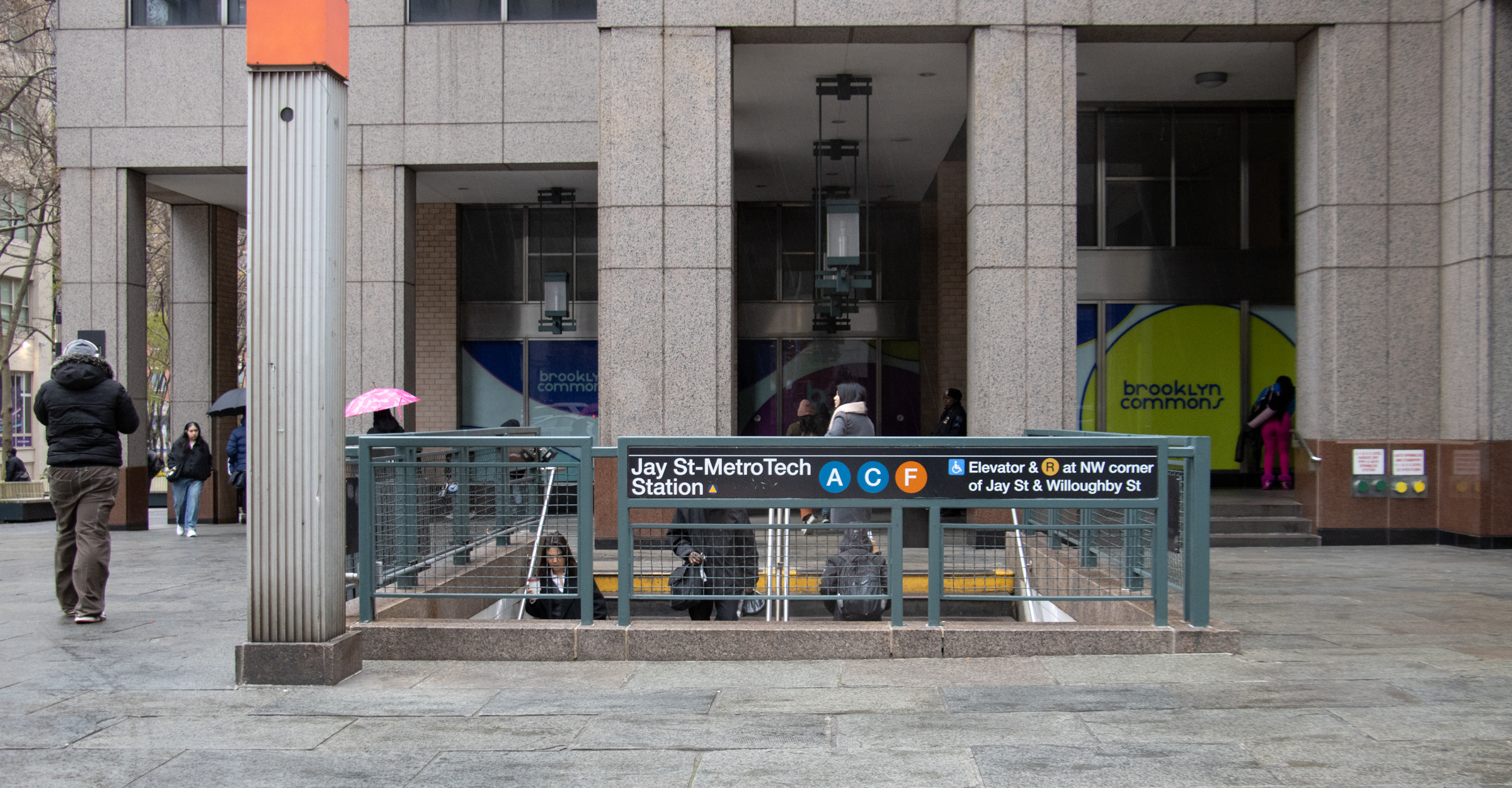Admiral's Row: Up Close and Personal
Over the weekend, Gothamist’s Jake Dobkin photographed the interior of the Admiral’s Row houses inside the Brooklyn Navy Yard. The shots are incredible so we encourage you to click on each one above to see the full-size version. We also thought the commentary he provided on his personal site, Bluejake, was worth repeating here: I…







Over the weekend, Gothamist’s Jake Dobkin photographed the interior of the Admiral’s Row houses inside the Brooklyn Navy Yard. The shots are incredible so we encourage you to click on each one above to see the full-size version. We also thought the commentary he provided on his personal site, Bluejake, was worth repeating here:
I was surprised how messed up these buildings were on the inside. The rear ends of many of the houses had collapsed, leaving a tangled mess of wood. Interior staircases were hanging a few feet off vertical, and large holes dotted many of the floors. Almost all of the windows were open or blown out, and the wind and rain had taken off most of the paint on the inside walls. Still– some romantic details were still extant– dozens of fireplaces and cedar-lined closets, handsome plaster work and ornamental detailing, and one enormous, empty ballroom. It’d be a shame if we let these buildings get demolished. I know the neighborhood needs a supermarket and more jobs, but there’s got to be a way to bring that stuff without destroying the past.
There’s also a related post on Gothamist from Monday. Incredible. Wish we could take photos like these.
Admiral’s Row Photos [Bluejake]
Inside Admiral’s Row [Gothamist]
Admiral’s Row Archives [Brownstoner]





Gawd, MM. I HATE when you say it better than I do.
Thank you MM, for stating what I was thinking in a much more even-handed way than I was about to do.
I am all for architectural preservation – but it should be noted that there are some very serious (and costly) lead issues (and I would suspect asbestos issues)here.
MM;
Neither Yankee stadium nor the new Met’s stadium were built with public funds.
I firmly believe that in 10-20 years, history will look back on this issue and see at it as perhaps the apotheosis of navel-gazing.
If the destruction of the old Penn Station and Jane Jacob’s book were the sparks that started the historical preservation movement, this issue demonstrates that it has reached intellectual exhaustion.
bkyn4life’s comment:
“i would rather setup a bus shuttle to red hook or target than destroy these houses.”
is the movement’s “Let them eat cake” equivalent.
According to what I’ve been told the National Guard has no money and thanks to the present world situation, the Navy Yard was not, by necessity a top priority.
Benson, I heartily agree with you on your examples of city public works mismanagement and dilly dallying. You forgot the 2nd Ave Subway, as well as countless roadwork projects.
Robert Moses was a visionary in many ways, and a complex creature, but I abhorred his high handedness, as well as his dismissal of the rights and property of “the little people”, especially in the boroughs. The last thing we need is another one of him, if that someone feels they need to combine his vision with his negative qualities. Bloomberg’s own highhandedness and arrogance is enough for one administration. Even he can’t seem to cut through the entrenched red tape on your list.
But the Row is not insignificant. Surely you know the importance of the Navy Yard in the history of the city, as well in our nation’s history. Maybe some of the houses are too far gone, but some of them could be saved. If we can be convinced that building ball parks and stadia for already wealthy sports teams and their owners, are for the public good, and deserve public funding, then preserving a piece of our unique history deserves the same.
Thanks for the explanation.
I have but 3 words…
Shame on them!
Townhouse Lady,
Always happy to provide some historical perspective – here’s what happened (or at least how it was described to me): Whenever the federal government decides to close a base, they go through a specific process. First they go to all other federal agencies and see if they want the property, then they go to the states and local governments. In the case of the Navy Yard, the Navy decided the property was surplus in the mid 1960’s. No other federal agency wanted it, so they approached NY State, who didn’t want it and eventually, NYC who wanted it an bought it from the feds for about $24 million. That deal did not include Admirals Row, which the Navy held on to and actually continued to use to house people until the mid 1970’s. In the mid 1970’s the Navy decided that Admiral’s row was surplus too and started the process again. This time, the Army National Guard decided that they wanted the property and they had some sort of plans to build a training facility on the site. So the property was transferred to them. For whatever reason (likely financial) the Army national guard never followed through with their plan and the property has been left to rot and deteriorate over the past 30 years. The National Guard has some sort of arrangement with the Army Corps of Engineers to “manage” the property for them, but we all can see how well that’s worked out.